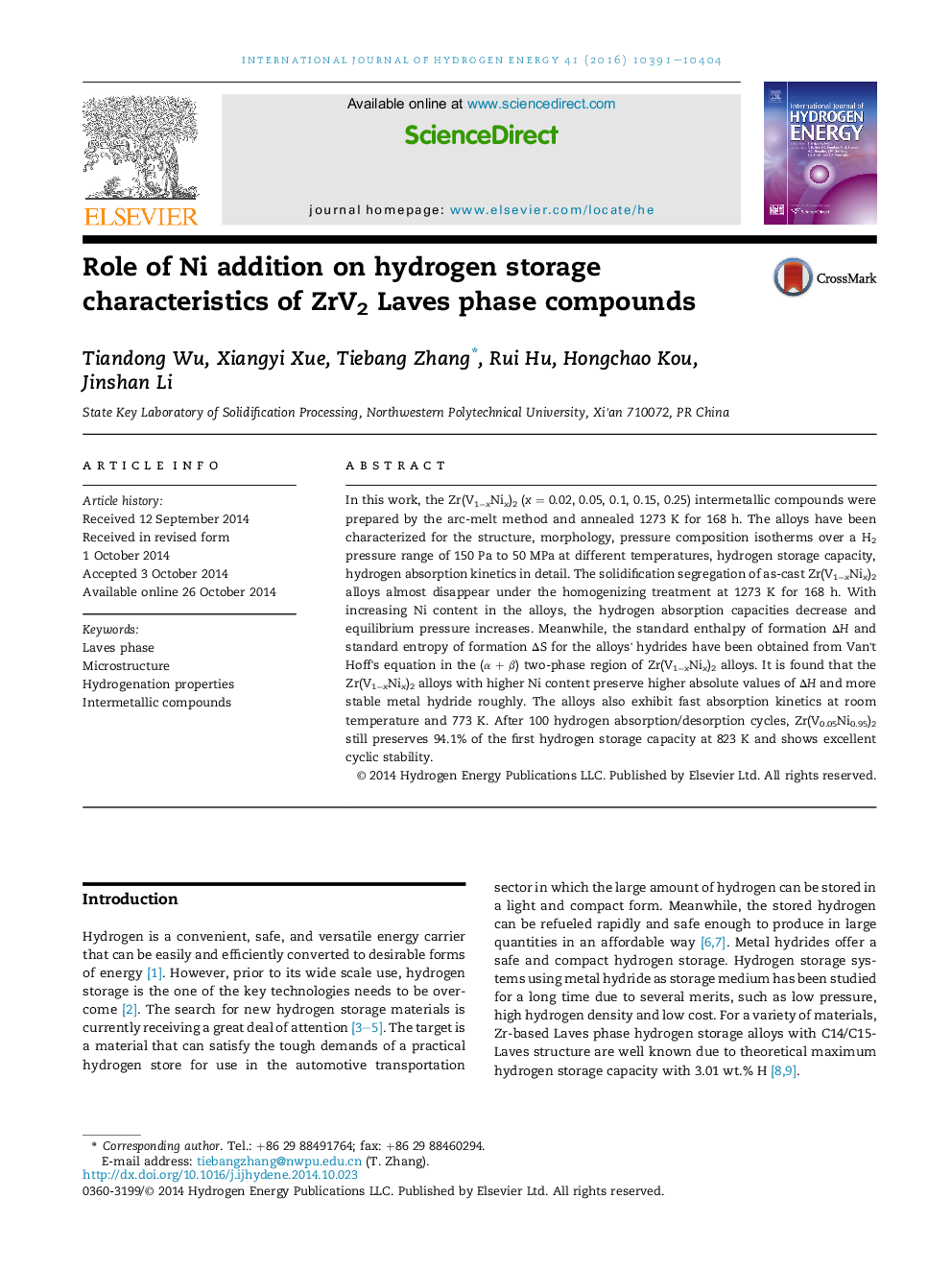| Article ID | Journal | Published Year | Pages | File Type |
|---|---|---|---|---|
| 1269774 | International Journal of Hydrogen Energy | 2016 | 14 Pages |
•Role of Ni on microstructure and hydrogen storage behavior are evaluated.•Ni reduces the maximum storage capacity but improves absorption kinetics.•Ni preserves positive effects on increasing the absorption and desorption plateaus.•Ni-doped ZrV2 alloys show excellent hydrogen absorption/desorption cyclic stability.
In this work, the Zr(V1−xNix)2 (x = 0.02, 0.05, 0.1, 0.15, 0.25) intermetallic compounds were prepared by the arc-melt method and annealed 1273 K for 168 h. The alloys have been characterized for the structure, morphology, pressure composition isotherms over a H2 pressure range of 150 Pa to 50 MPa at different temperatures, hydrogen storage capacity, hydrogen absorption kinetics in detail. The solidification segregation of as-cast Zr(V1−xNix)2 alloys almost disappear under the homogenizing treatment at 1273 K for 168 h. With increasing Ni content in the alloys, the hydrogen absorption capacities decrease and equilibrium pressure increases. Meanwhile, the standard enthalpy of formation ΔH and standard entropy of formation ΔS for the alloys' hydrides have been obtained from Van't Hoff's equation in the (α + β) two-phase region of Zr(V1−xNix)2 alloys. It is found that the Zr(V1−xNix)2 alloys with higher Ni content preserve higher absolute values of ΔH and more stable metal hydride roughly. The alloys also exhibit fast absorption kinetics at room temperature and 773 K. After 100 hydrogen absorption/desorption cycles, Zr(V0.05Ni0.95)2 still preserves 94.1% of the first hydrogen storage capacity at 823 K and shows excellent cyclic stability.
